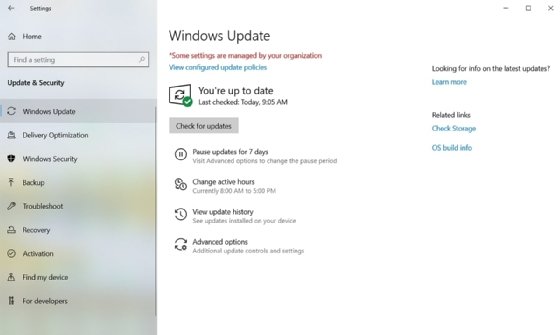Microsoft Windows Update
What is Windows Update?
Windows Update is a free maintenance and support service for Microsoft Windows users that, once activated, automatically searches for and installs updates on the user's personal computer (PC). Windows Update helps prevent new or potentially widespread exploits and includes service packs, software patches and updates for device Drivers.
Patches and other security updates are normally released by Microsoft on the second Tuesday of every month -- typically called Patch Tuesday -- unless there is a need for a more urgent fix. Windows Update analyzes a PC's configuration and then shows a list of relevant downloads for the user's system. The Windows Update control panel is found in the Start menu. Users can set Windows Update to automatically install updates. If this is not possible, users are encouraged to check for new updates once a week.
What is Windows Update used for?
Windows Update is a cloud-based service used to keep Microsoft Windows and other Microsoft software like Windows Defender updated. The patches and updates normally include feature enhancements and security updates that can protect Windows from malware. Windows users can also view an update history that shows previously installed updates.
In terms of quality updates or kinds of updates, important updates typically focus on improving reliability, privacy and security. Recommended updates typically address any non-critical issues, while optional updates help to improve the user experience with smaller updates to drivers.
How to access and use Windows Update
Windows Update is a built-in feature of both Windows 10 and Windows 11. Users select Start > Settings > Update & Security > Windows Update.

Once at Windows Update, the user clicks on "Check for updates." Windows Update also tells the user the last time there was a check for an update, as well as clickable text for "View configured update policies." There are also options on this screen to "Pause updates for 7 days," "Change active hours," "View update history" or view "Advanced options."
Users then can select the updates they want to install and follow the instructions to download and install. Most of the updates are automated, but some may need a small number of user inputs. Users may also be prompted to restart their computer after an update is done installing.
Windows Update became available in Windows XP. In previous versions of Windows, including Windows 8, Windows 7 and Windows Vista, Windows Update is an applet that a user can access from the Control Panel.
Versions of Windows Update
Microsoft has two expansions of the service -- Microsoft Update and Windows Update for Business.
Microsoft Update enables users to receive updates from both Windows Update and from Office. Microsoft Update also enables users to get updates for third-party drivers. When the user is online, Microsoft Update searches for updates from the Windows Update website.
Windows Update for Business is a set of features for the Pro, Education and Enterprise editions of the Windows 10 and Windows 11 operating systems. This expansion of Windows Update is designed to ease the administration of Windows in an organization. It enables Windows users to enable group policy or mobile device management software like Microsoft Intune to configure settings for how and when devices are updated. Users can also defer automatic update installations for 30 days.
Learn which patches were released on a Patch Tuesday when six different zero-day issues were fixed.







